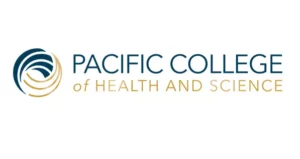A 4,000-year-old technique may do wonders for heart health. From high blood pressure to cardiac rehabilitation, the ancient Chinese practice of Qi Gong has been proven to strengthen and revitalize the heart.
What is Qi Gong? For those unfamiliar with the traditional Chinese medicine technique, Qi Gong is essentially a system involving physical training, philosophy, and preventative and therapeutic health care. The term Qi means breath of life or vital essence, and Gong means self-discipline, work, or achievement. The art itself combines isometrics, isotonics, aerobic conditioning, meditation, and relaxation. When practiced regularly, Qi Gong allows us to gain control over the life force that courses through our bodies. This may sound far-fetched to Western minds, but it is a time-tested technique proven to help a host of problems, including heart problems, depression, detoxification, osteoporosis, cancer, chronic pain, and stress. By examining inward, the practice urges its students to focus inward and “work with life’s energy.”
Although there are nearly 5,000 styles of Qi Gong cataloged by the Chinese Government, all forms focus on manipulating life energy in a positive way. MedicalQi Gong involves the combination of breathing exercises and meditation to cultivate and deliberately control energy within the body. The two main techniques of medicalQi Gong work hand-in-hand: breathing exercises help induce a state of meditation and vice versa. In meditative Qi Gong states, cares, worries, and daily stresses wash away. It’s similar to getting a relaxing massage, yet much more effective. The technique replaces stress and anxieties with positive images, increased confidence, and enhanced spirit. Eventually, there are no worries, distractions, or fears. In turn, this stimulates the body’s life force – the circulation of blood and qi (life energy).
Qi Gong isn’t as stationary as it sounds. This ancient Chinese practice is also movement-based – extending to an effective martial art. Many Americans are already practicing the mind-body technique of Qi Gong via popular Tai Chi classes at community centers and health clubs. Tai Chi and Qi Gong go hand-in-hand: combining the internal focus and physical movements to increase the body’s overall vitality.
In fact, this art has been proven to positively affect senior citizens when combined with Tai Chi. researchers concluded that the movements associated with Tai Chi helped seniors improve their physical functioning. “It was concluded that the 6-month Tai Chi exercise program was effective for improving functional status in healthy, physically inactive older adults. A self-paced and self-controlled activity such as Tai Chi has the potential to be an effective, low-cost means of improving functional status in older persons.” Most notably, those who took Tai Chi were less-likely to fall – one of the largest causes of serious injury for seniors.
If you think a career in holistic medicine is something you would like to pursue, contact us and speak to an admissions representative to get started on your new journey!
Research and Studies Supporting Qi Gong’s Efficacy
Several studies have proven Qi Gong’s effectiveness in treating those with high blood pressure and other heart problems. When practiced alongside conventional Western medical treatments, Qi Gong reduces high blood pressure and aids cardiac rehabilitation through improving balance, coordination, and physical activity.
A Korean study examined the effects of traditional Qi Gong on blood pressure, respiratory rates, and heart rate. “Heart rate, respiratory rate, systolic blood pressure and rate-pressure product were significantly decreased during Qi-training,” according to the 2000 study. “From these results, we suggest that… Qi-training has psychological effects that indicate stabilization of the cardiovascular system.”
A 2006 study conducted at the Himalayan Institute of Medical Science in Uttaranchal, India proved similar results. Researchers compared mental relaxation and slow breathing as adjunctive treatment in patients of essential hypertension by observing their effects on blood pressure and other autonomic parameters like heart rate, respiratory rate, and skin temperature. “Even a single session of mental relaxation or [Qi Gong] can result in a temporary fall in blood pressure.”
Doctors in Hong Kong evaluated Qi Gong and progressive relaxation in improving cardiac patients’ quality of life. “Progressive relaxation and Qi Gong exercise improved the quality of life for cardiac patients with reference to certain physiologic and psychologic measures. … The Qi Gong group demonstrated greater improvement in psychological measures in addition to reduction in systolic blood pressure.”
Finally, a 2005 Italian study examined instances of high blood pressure in those suffering from hypertension: “Slow breathing reduces blood pressure and enhances baroreflex sensitivity in hypertensive patients. These effects appear potentially beneficial in the management of hypertension.”
Practicing Qi Gong lowers pulse rate, blood pressure, metabolic rates, and oxygen demand. The sense of serenity Qi Gong activates qi, improves blood circulation, and balances the body’s life energies. After reducing hypertension and blood pressure, Qi Gong goes on to surprise us with more and more benefits to the human body.
References:
Li, F., et al. “An evaluation of the effects of Tai Chi exercise on physical function among older persons: a randomized control trial.” Annuals of Behavioral Medicine., 2001Spring; 23(2):139-46.
Li F. 145.Myeong Soo Lee, Byung Gi Kim, et al. “Effect of Qi-training on blood pressure, heart rate, and respiration rate. Clinical Psychology 2000: 20(3),173-176
Myeong Soo Lee, Byung Gi Kim, et al. “Effect of Qi-training on blood pressure, heart rate, and respiration rate. Clinical Psychology 2000: 20(3),173-176.
Kaushik RM, et al. Effects of mental relaxation and slow breathing in essential hypertension. Complementary & Teoretical Medicine. 2006 Jun;14(2):120-6. Epub 2006 Jan 10.
Hui PN, et al. An evaluation of two behavioral rehabilitation programs, quigong versus progressive relaxation, in improving the quality of life in cardiac patients.Journal of Alternative and Complementary Medicine. 2006 May;12(4):373-8.
Joseph C.N., Porta C., et al. Slow breathing improves arterial baroreflex sensitivity and decreases blood pressure in essential hypertension. Hypertension. 2005 Oct;46(4):714-8. Epub 2005 Aug 29.
Featured Posts:

